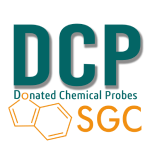SERP
Comments:
Although one may use this compound for in vitro studies with a general experimental procedure, users should have full awareness of potential limitations of this compound for in vivo studies due to its relatively weak PK profiles.
Given that T-10430 has an EC50 of 31 nM in the Tag-lite assay and 19 nM in the IP-One assay, using a concentration of 100 nM might not be sufficient to achieve full inhibition in all cases. If users want to achieve robust agonism, it is generally recommended to use a concentration that is at least 10 times the EC50 value.
For T-10430, this would mean using a concentration of around 300 nM to 500 nM. This range should provide a robust agonism while minimizing the risk of cytotoxicity based on the provided dataset.
In vivo use is possible; however, compared to typical small molecule compounds used in in vivo studies, the PK profile of this compound is relatively weak. For instance, the plasma half-life is short, and the duration of in vivo exposure above the expected EC50 is estimated to be less than two hours, even if the compound has very low protein binding and high bioavailability. However, there is no plasma protein binding profile reported. Users are advised to interpret in vivo test results with full awareness of the potential limitations of compound's pharmacokinetics.
(last updated:
1 Feb 2025 )
